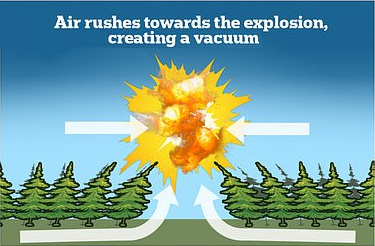
#Orange
In this infamous case there is a persistent talk about brown-red or orange discoloration of the of skin of the victims and their clothes. Lets track this claims to their origin, and see what they amount to.
Case files
All autopsies were performed in the morgue of Ivdel central department hospital, PO Box №240 in daylight and sunny weather.
- Doroshenko autopsy report (case files 104-111)
The skin of the face is brown-purple color.
(Russ - кожный покров лица буролилового цвета.) - Krivonischenko autopsy report (case files 112-119)
The skin of the face is blue-grey color.
(Russ - Кожные покровы лица синюшно-серого цвета.) - Dyatlov autopsy report (case files 120-126)
The facial skin is of a bluish red color.
(Russ - Кожные покровы лица синюшнокрасноватого цвета.) - Kolmogorova autopsy report (case files 127-134)
The skin of the face and hands is purple-red color.
(Russ - Кожные покровы лица и кистей рук лиловокрасного цвета.)
4 Mar 1959
- Slobodin autopsy report (case files 95-103)
The skin of the face is blue-red color.
(Russ - кожные покровы лица синюшно-красноватого цвета.)
8 Mar 1959
- Kolevatov autopsy report (case files 345-348)
The soft tissue of the face is thin, flaccid and of a dirty grey color.
(Russ - Мягкие ткани лица дряблые истончены, грязно-серого цвета.) - Zolotaryov autopsy report (case files 349-351)
The facial skin is of greenish grey color.
(Russ - Кожные покровы лица зеленоватосерого цвета.) - Thibeaux-Brignolle autopsy report (case files 352-354)
The skin of the face, body and limbs is of a grey-greenish color.
(Russ - Кожные покровы лица, туловища и конечностей серозеленоватого цвета.) - Dubinina autopsy report (case files 355-357)
The skin of the face is of yellowish brown color.
(Russ - Кожные покровы лица желтоватоскоричневого цвета.)
9 May 1959
Funerals
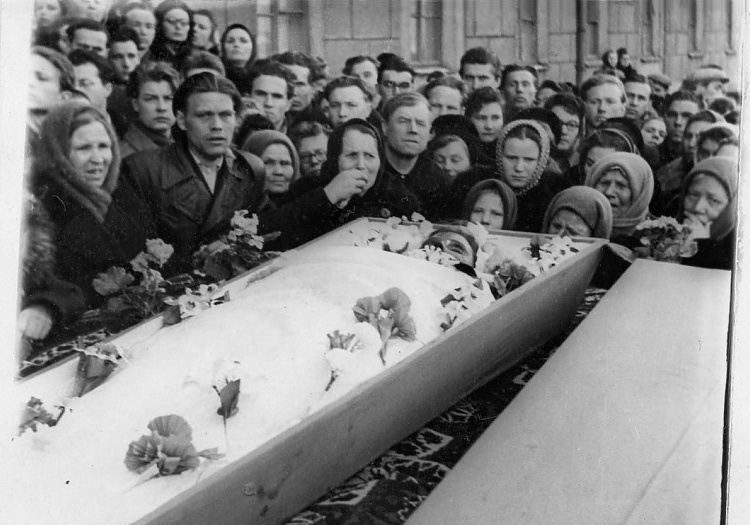
9 Mar 1959 funerals, Zina's open coffin (more photos)
Witness testimony of Rimma Kolevatova given on April 14 (case files 270-272). This is before the body of her brother was found: "I was present at all the funerals of the group. Why were their faces and hands all so dark brown ? How can we explain the fact that the four of them who were beside the fire, they were obviously alive, why didn’t they try to return to the tent? If they were considerably better dressed, as far as I can see from clothes missing from the tent... if it was a natural disaster, then for sure, after being warmed by the fire, then the guys would have crawled back to the tent. The whole group wouldn’t have perished from an Arctic storm!"
Yuri Kuntsevitch, the head of the Dyatlov Foundation in Yekaterinburg, remembers: "At that time I lived next to the cemetery, and was 12 years old, so I was really interested. I tried to push through the crowd to see everything, but it was impossible. I was amazed by some of the people in the crowd. They were wearing trilby style felt hats and had jodhpurs or motorcycle riding pants. They were supervising the procession with their faces blank, expressing nothing. I was standing on a pile of earth at the graveside and I was about eight meters from the bodies. Their skin had a somewhat brick color , and I saw some of the students helping to lower the coffins to the graves. It was said they were there despite being forbidden to leave their classes to attend."
Vladimir Askinadzi: "The exposed skin of the corpses was snow-white. As for the dark color of their skin, I affirm this! I myself saw Zina’s face when her coffin stood in the lobby of the dorm. THE FACE was CHOCOLATE color. I don’t know where it turned black, maybe during thawing in the morgue?"
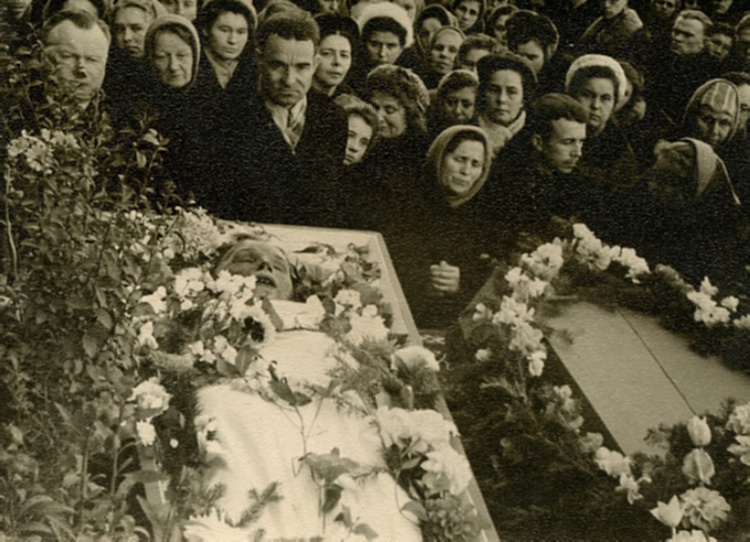
10 Mar 1959 funerals, Rustem's open coffin (more photos)
Lyudmila Morgunova, sister of Rustem Slobodin, says in 40:42 1TV 04/16/2013 that at the funeral she was close to the open coffin and the color of the skin of her brother was like chocolate .
In 1959 Yuri Bondarev was fifth year student in the mechanical department of the Ural Polytechnic Institute. He volunteered to help with the funerals on March 10. "Aren't you afraid?" - said my countryman. - And added: "You can refuse." I was surprised: what do they mean should I refuse? And they answered me directly: "Three students got frightened already." I am not easily unnerved, so agreed. They gave me a truck, and I went to the morgue. I had to go somewhere at the far end of the city, on Shchors Street, I think. I recognized Dyatlov first, although I had seen him only a couple of times before. I was struck by the fact that more than 90% of the bodies of the dead were of some kind of dark, almost chocolate color, even with a purple tint - I remember, because teeth stood out sharply against this background. And the texture of the skin was like corrugated photographic paper. And somehow they seem to have become smaller, as if shrunken." Read the interview →
Conclusion
At the autopsies the color of the bodies was normal for the 3+ weeks and 3 months respectively exposure to the elements after the 5 days of snow reflective sunburn. You can see from the visualization the shades that a corpse is going though in his normal cycle of decay after frostbite. The first time the mysterious dark red, brick color is noticed at the funerals. What happens between the autopsies and the funerals, especially when the caskets are going to be open? Prep work by a mortician. If you try to color the shades you read about in the autopsy reports, especially if the mortician is not the best, what kind of color do you think is gonna come out? Looks at the colors from the autopsies. And only the bodies found in March were seen off in open caskets. From the hikers found in May only Dubinina's father was allowed to see the body of his daughter and sources say he fainted. Nobody is discussing the color of their faces.

Also there are recollections for the contrary, that the bodies were of a natural color for the state they were in. But these reports are not so sensational to repeat. In this case only what is shocking seem to make it to the surface. Georgiy Karpushin, senior navigator of the 123rd flight detachment of the Ural Civil Aviation Administration remembers: "I can argue, since I saw the bodies of the deceased, that they were of a natural color, and not of any orange color, as they later said."
Read the interview →

"The lids of the coffins are open, and everyone saying goodbye, walking around in a circle, has the opportunity to see with their own eyes the faded faces of our silent friends with a brownish tint and abrasions."
Read the interview →

"We immediately noticed that Doroshenko, especially his hands were black up to his elbows, and it’s not just brown, as many have observed there, his face is a little brown in color, as if exposure from a flash of fuel is possible, but he clearly had... that he was trying to warm them, it was clearly... a fire. We immediately noted that his hands were frostbitten to such an extent that he did not feel anything, when he was still trying to warm them. Some impression that the slightly unburnt skin was already black ..." Read the interview →

From an interview with Yuri's elder brother - Konstantin Krivonischenko:
– Did you father ever talked about Yuri in the morgue? Was his color unusual?
– He did not say anything. He didn’t want to upset us. But the members of the search groups talked at the wake that the corpses were all black .
Read the interview →

Andrey Yuryevich Deev, Doctor of Medical Sciences and Candidate of Biological Sciences, a graduate of the Leningrad Medical Academy:
"The skin of the bodies did not have any unusual color. The skin of the bodies did not have any unusual color. In the "last four", Dubinina and Kolevatov had a greenish-blue (very low-intensity) color, characteristic of the color of the decomposition of sulfur compounds (tissue protein) in the water..."
Read the letters →
Clothes
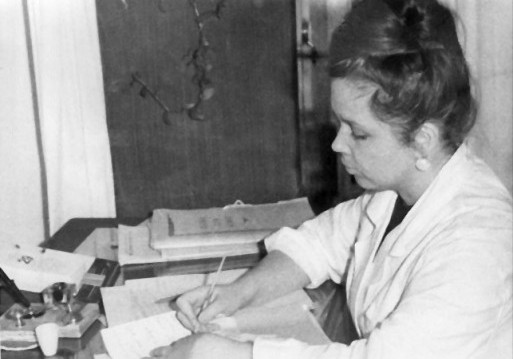
1962 Genrietta Eliseevna Churkina (Makushkina) at her desk
In 1999 medical forensic expert (specializing in tissues) Genrieta Eliseevna Churkina (now Makushkina) speaks about the coloring of the clothes on the bodies found in May. She was present at their autopsies:
"I was present during the medical examination of the bodies conducted by Boris Vozrozhdenniy. I remember well when they took off their clothes and hung them on ropes, we immediately noticed that they had some strange light purple hue , although their natural colors were different. I asked Boris - Don't you think that the clothes are processed with something? - He agreed."
Her son Igor Olegovich Makushkin doesn't remember anything to have been said about discoloration of the clothes, but he remembers talk about orange snow. Read the interview →
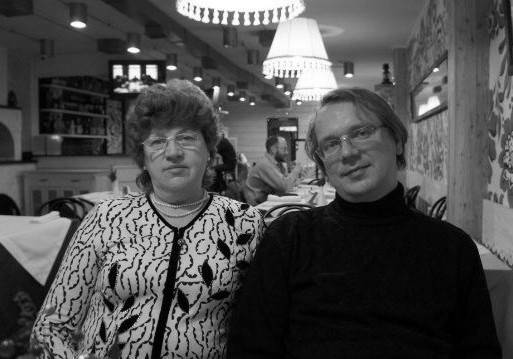
Irina Rashevskaya (Doroshenko) with her son Yuri
In 2011 Irina Nikolaevna Rashevskaya, sister of Yuri Doroshenko, writes a letter to "Internet Center of Dyatlov Group Tragedy" in which she says: "We were very poor. For 4 years of study, mother somehow managed to get Yuri a coat because all he had was a jacket. This is in the freezing Sverdlovsk. Unthinkable. And she sent him a coat. And this when Yuri was no longer alive. How did mom cried. I remember that she was telling and showing a sweatshirt and a sweater, both ruined. Tinted with orange powder. It seems all the dead were orange ."
Later on Irina Nikolaevna recounts the powder part, she remembers only that the clothes were tinted orange.
Irina didn't know much of what is going on with her brother Yuri because according to her own words "When Yuri entered UPI, we left for Kazakhstan. I was 10 years old. When Yuri died, I was 13 years old." It is all hearsay. Yuri was closer with his brother Volodya, who was 3 years younger, studied in UPI and died from a heart ascending Elbrus in 2008.
Theories
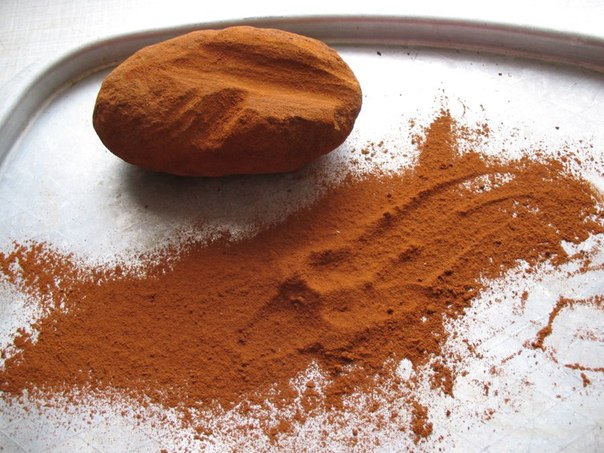
Mansi are using ocher
One theory says that Mansi guarded the deceased from Dyatlov group before the search parties got to them. They tried to help their souls with the transition in worthy afterlife according to their believes. Maybe trying to talk to the departed souls. Mansi are using ocher to decorate their sleds and yurts. Read the research below about the use of the red and derivative color hues in the religion of the tribes from same family.
On the basis of investigating traditional clothing of the Ob Ugrians the author considers questions of colour symbols. For reconstruction of certain modes of colour-marking, she attracts materials on clothing of the neighboring peoples as well as those of the Finnish-lingual people of the Volga basin related to the Ob Ugrians.
"... The reddish color, embodied by ocher and other dyes (in Ob's blackheads, is a decoction of the larch bark, the paint from the plant Pomegranate, etc.), in archaic cultures associated with blood - a relevant force, a topical beginning. Thus, in the Mansi, the kellankwe verb 'dye' is etymologically close to the word kelp 'blood, bright red, red' [Romandeev, Kuzakov, 1982, pp. 235-236]. In primitive thinking, blood had magical powers, including rejuvenating, invigorating and purifying qualities. In accordance with it it was used: drank, smeared the body, sprinkled, etc. [Levi-Bruhl, 1994, pp. 522-523]. According to the field materials of the 1991 expedition, even in the middle of the twentieth century, the Lyapin Mansi had a tradition of drinking only the killed deer, which was attributed to its medicinal properties. Notwithstanding that, in primitive thinking, the use of blood or a substitute (reddish paint) on the body or articles of clothing and everyday life gave them certain characteristics that could protect a person and satisfy his needs. Z.P. Sokolova [1972, p. 59] described the funeral ritual of the Khanty rivers of the Sini and Kunovata, the entry of the tombstone..." Source Colour-symbols-in-Ob-Ugrians-traditional-clothing.pdf

Blood snow, watermelon snow, red snow
Vladimir (ВэйС) visited the slope of Kholat Syakhl in 2013. "On June 18 this year, moving along the snowfield, approximately in azimuth 230-240 degrees from the location of the tent and at a distance of 700-800 meters we found an orange-red spot located right on the surface of the snow and penetrating deep into the firn by about 8-10 mm The spot was not plaque-like, as it happens when tree pollen falls on the snow, the snow itself was colored evenly, without spots, on an area of about 300x250 mm... We slightly dug up the spot, measured it, all this was done without gloves. Returning to the camp we discovered that this substance stains the clothes quite visibly and persistently and could be wash out only after the second even third time.
Upon returning to Yekaterinburg, photographs and a description of the spot were handed over to specialists of the Institute of Plant and Animal Ecology of the Ural Branch of the Russian Academy of Sciences, who easily classified this raid as Watermelon snow (Chlamydomonas nivalis), green unicellular algae. Chlamydomonas nivalis is a unicellular red-coloured photosynthetic green alga that is found in the snowfields of the alps and polar regions all over the world. They are one of the main algae responsible for causing the phenomenon of watermelon snow, where patches of snow appear red or pink (Wikipedia).
The algae can develop on the surface of water, snow and ice. It blooms after the darkest and coldest period of winter, with a slight heating of the water, which turns green and, as the weather clears, turns pink or turns red. Temperature of +4C is already deadly. Thanks to protection from ultraviolet radiation, which is dangerous for other organisms at heights, it can reproduce at an altitude of up to 3.7 km above sea level. Latin name is Chlamydomonas nivalis (Bauer) Wille"
Thermobaric weapons - also known as vacuum bombs - are high-powered explosive that use the atmosphere itself as part of the explosion. They are among the most powerful non-nuclear weapons ever developed. Thermobaric bombs and grenades leave no visible wound
The bomb works by using oxygen from the surrounding air to generate a high-temperature explosion, making it far deadlier than a conventional weapon. "One might think they were burnt, but they are not, only their color is dark... Common features of all the victim’s bodies were lack of main wounds… All victims had serious internal edema and hemorrhage with loss of blood from all body orifices. All the bodies were covered of dark powder so to look black, but were not burnt. Clothes and hair were not damaged or burnt... Samples from the skin of six corpses were analyzed for histology in two independent laboratories. The results revealed no altered elements in the skin and derma and no sign of burns. All samples showed particles of dark color covering the skin, histologically staining for iron... Electron microscope scans showed the presence of phosphorous, iron and magnesium at below the normal level of detection. Analysis of the dark refractive material layered over the skin of one victim showed it contained mainly carbon and oxygen, and lesser amounts of iron, silicon and calcium. Some of these elements are used in particle form as fuel additives to boost the blast of thermobaric bombs or grenades."
Thermobaric, or fuel-air energy (FAE), explosives work in two stages. The shell, or container, is burst open to spread the combusting agent as a fine aerosol, then this is ignited, creating an overpressure blast wave traveling at 3000 meters per second, and burning all available oxygen in the process. MIFTAH.org
The US Defence Intelligence Agency describes the effect of a thermobaric bomb: "Those near the ignition point are obliterated. Those at the fringe are likely to suffer many internal, and thus invisible injuries, including burst eardrums and crushed inner ear organs, severe concussions, ruptured lungs and internal organs, and possibly blindness. The destruction, death, and injury are caused by the blast wave." Thermobaric weapons were developed by both the US and the Soviet Union in the 1960s.

Orange spheres in the sky
There are many sightings of light balls in the sky in this period of time and area. I am going to address all of them - more than 20, in a separate publication, here I am citing the only one where it says that the phenomenon was orange-red in color.
Valentin Gerasimovich Yakimenko says that on 03/31/1959 a large ball of fire was moving directly at them from southeast. The phenomenon lasted 20 minutes, and then disappeared behind the height of "880". Before this, "a star appeared from the center of the ball, which gradually increased to the size of the moon, began to fall down, separating from the sphere." The same was observed on February 17 throughout the Northern Urals (from Tagil to Ivdel).
"The ball moved silently," says Valentin Gerasimovich Yakimenko, a participant in the search in 1959. "It was orange-red, the size of a rising moon." Gradually, the circle was losing its features, blurring. We experienced curiosity rather than fear ... Inside the ball, the movement of the jets was felt, the body itself resembled a plasma. And, probably, that's why we had the idea of ball lightning. But this is only an assumption, no more... – Kizilov
The theory circulating the internet is: "Orange spheres were sighted in the sky on the night the Dyatlov group died by campers about 50 miles away from the scene; some explained these away as R-7 intercontinental missile launches, seeing as the last campsite was located on the pathway from Baikonur Cosmodrome to Chyornaya Guba, a Soviet nuclear testing ground."
I have many problems with this statement:
- They mean Mt Chistop 34.2 km (21 miles) from Dyatlov Pass. At the time of the tragedy there was nothing there, only wolves. Twenty years after the incident a radar station was installed on Mt Chistop, which existed until the 90s. The situation of this military facility is not conditioned by anything, which gave an additional reason for many researchers to talk about the "cosmic" trail of the tragedy.
- Another aspect is that it doesn't make any sense for the Soviets to launch nuclear rocket to their own test base.
- Besides 1959 and 1960 have no testing, a bilateral moratorium between the USSR and the US, officially beginning 31 Oct 1958. Source Wikipedia
There is no much left from Chyornaya Guba.
You can discuss this article in the forum.

